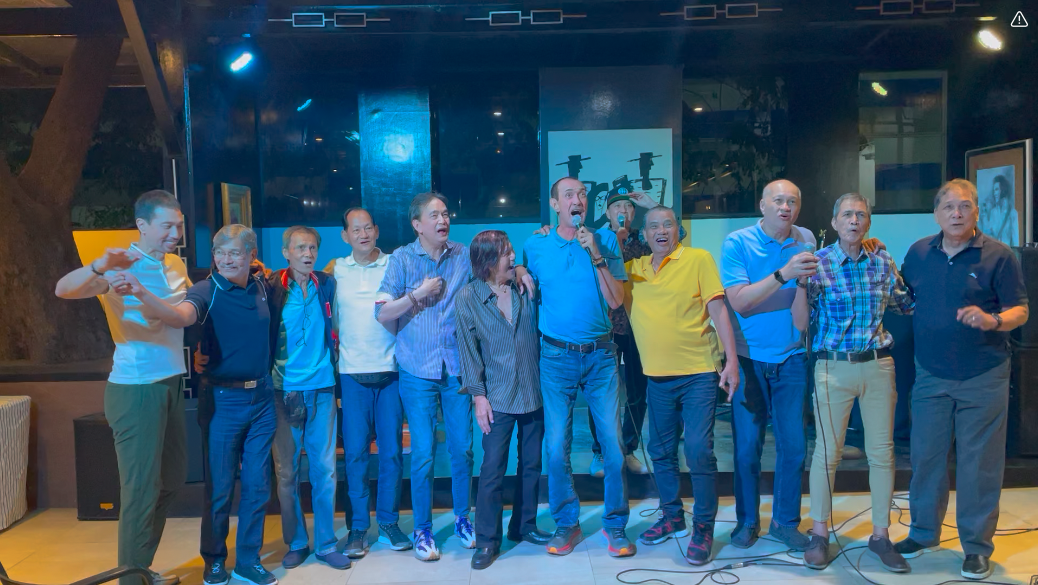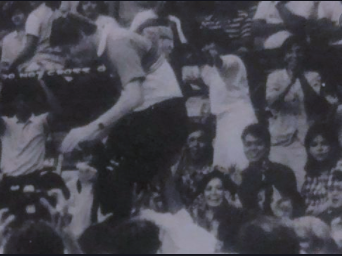“Bitin kami….”
That was the first thing Gil Cortez told Sports Potpourri when asked why the Toyota players wanted to meet up once more.
It was supposed to be a small gathering to give a fitting sendoff to Roberto “Judge” Concepcion, who was going back to the West Coast next week. The original plan was to gather around 6-8 teammates for lunch and a few drinks at a Mediterranean restaurant in Rockwell.
Somehow, everyone who went to the 50th grand reunion party last February 18 gave their nod in the Toyota viber group, forcing Cortez to change the venue. Coach Dante Silverio readily offered his Gaslight events place along Pasong Tamo Extension, the same venue from last month’s party, and it was set.
Cortez then called 4x PBA MVP Ramon Fernandez and confirmed that he would be in Manila on March 11. But because Fernandez had a lunch meeting, the group decided to set the get-together at a later time – moving lunch to dinner instead. Silverio made sure there was plenty of food and entertainment, Cortez brought liquor and wine.
Early birds were Concepcion, Ulysses Rodriguez and Ed Camus, who all came from the east and rode in one vehicle. Cortez also arrived before 4PM while SIlverio, the ever-gracious host, was already in his half-buttoned silk shirt to welcome everyone. Slowly, the others came in – Fernandez, Emerito Legaspi, Oscar Rocha, Ed Cordero, Pol Herrera and their loyal driver, Mon Valdez. Around 5PM, Rollie Marcelo trooped his way welcomed by a gleeful ribbing from his teammates. Marcelo tried to go to the February 18 reunion but couldn’t find the venue while along Pasong Tamo and opted to go home instead. Last to arrive was Ompong Segura.
There was no program this time, just plenty of food and drinks and a videoke player and a sophisticated audio setup. Silverio kicked things off as he performed an Elvis Presley ditty followed by a Beatles track. But it was his version of “Ticket to Ride” that got everyone to sing along with him. Soon after, Legaspi held the mic and performed back-to-back APO songs, “Kabilugan ng Buwan” and “Kaibigan.” Cortez then rendered a James Taylor hit, “If I Keep My Heart Out of Sight” and Stevie Wonder’s “Knocks Me Off my Feet.”
Coach "Osbok" Dante Silverio crooning a Presley ditty
Silverio’s guest, Freddie Motos, a former Shell executive who runs the Hoops4Hope2Heaven, a youth empowerment program, was also present. Motos was one of those responsible for Silverio’s comeback as a head coach in the 3rd Conference of the 1988 season after a 9-year hiatus. He glowingly spoke about his relationship with SIlverio, how he cheered for Toyota and idolized Robert Jaworski, and how he brought Cordero to Shell after Tanduay’s disbandment.
Speaking of Cordero, he revealed that he never got to play for Silverio at Toyota, having been taken in by the team in 1982 when Ed Ocampo was already the head coach. Instead, he got to work with the groovy taskmaster in 1988 when they were both with Shell.
At exactly 7PM, with Cortez belting out his version of “Long and Winding Road” by the Beatles, a power outage occurred but this didn’t douse the enthusiasm of everyone. Cortez, with Cordero backing him up, finished the song while singing along with their teammates. Power was eventually restored after 5 minutes.
With whisky, brandy, cognac and red wine all over, Rocha finally mustered enough guts to pick up the mic and do his version of “Doon Lang” by Nonoy Zuñiga and Fred Panopio’s classic, “Pitong Gatang” to the delight of everyone. Cordero proved to be quite a crooner, his cool, baritone voice bringing the house down while performing “Endless Love” and “Something Stupid” alongside Silverio’s resident singer / entertainer. Ompong Segura hit the notes right as he performed the Neil Diamond hit, “Sweet Caroline.”
Of course, there was the usual banter. Rocha’s recent interview on the online sports show, “An Eternity of Basketball” describing Fernandez as too “sosyal” for his comfort drew the biggest laughs. But everyone praised Rocha’s no-holds-barred storytelling on the show, something that only the original PBA’s “bad boy” could do.
Fernandez, who tried hard not to sing, capped off the night with his version of Florante’s “Handog” that brought goosebumps to everyone. He then invited everyone to join him on stage and everyone sang along – a fitting end to the revelry.
Silverio couldn’t help but feel elated and nostalgic seeing his former wards once more. He, Cortez and Cordero were the last to leave with the coach telling the two that “since we’re all not getting younger anymore, the more often we should have reunions.” He and Cortez confided to this writer their wish of having a Toyota-Crispa reunion gathering in the future for a good cause, fully acknowledging how big this event would be if it happens. Cortez, the prime mover of the two gatherings, hopes to reach out to his Crispa colleagues and work out something for a good cause.
Sports Potpourri, with Coach Silverio, Gil Cortez, Ulysses Rodriguez and Shell executive Fred Motz
“Ok na, hindi na kami bitin!”





















